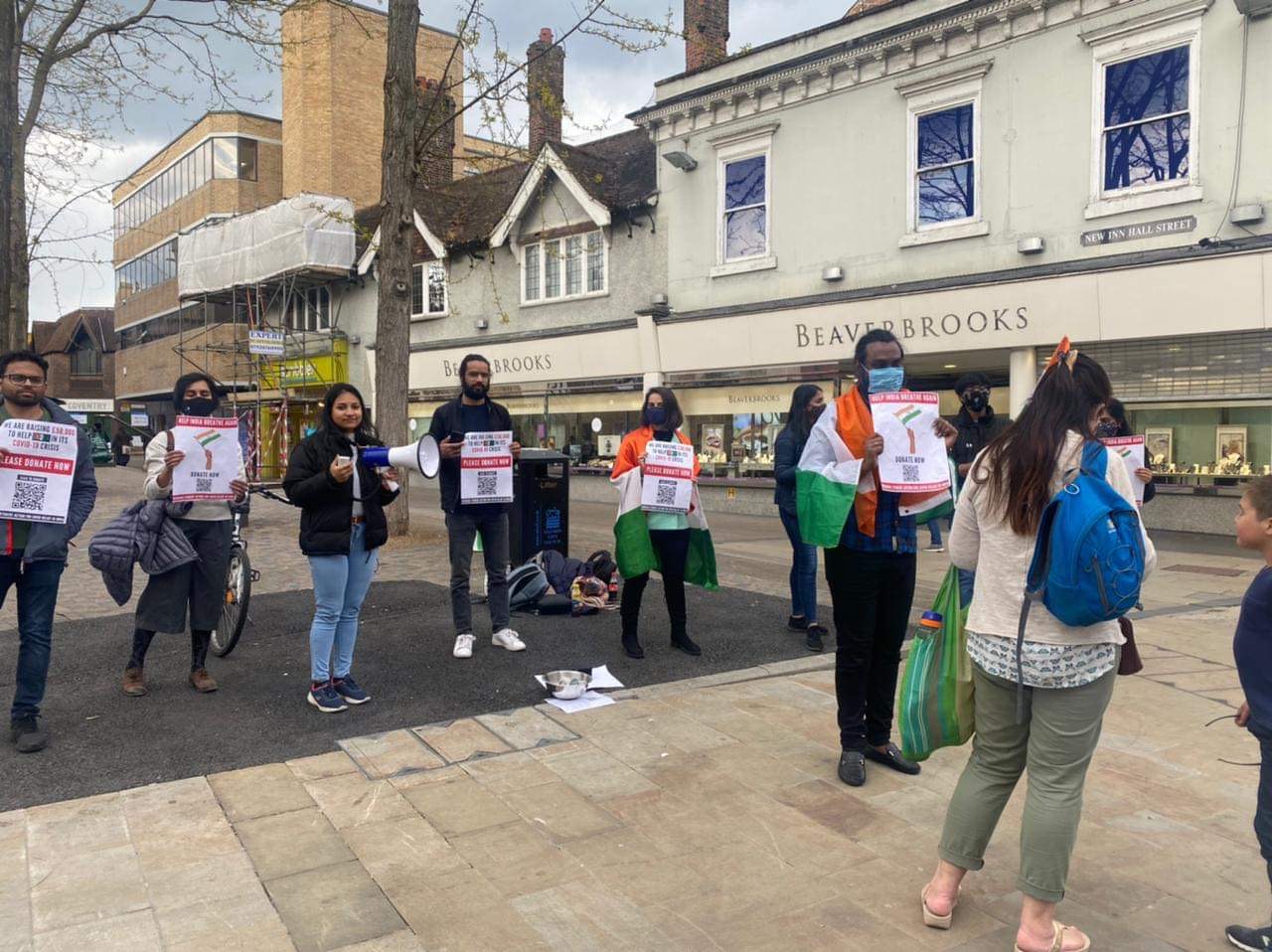One of the most important lessons I have learnt, as I imagine many others have too from this pandemic, is the value of offering up our time to help others. Cher-ity Corner is a weekly column that highlights local Oxford charities that students can volunteer with and make a difference.
I spoke to Freya Turner, the Lead Coordinator of Jacari to discuss how they came about, the opportunities that are on offer for students and lots about what they do. Find out how you can get involved and more about their amazing work!
What’s Jacari?
“Jacari was set up in 1956 as a student run anti-racist campaign (the Joint Action Committee Against Racial Intolerance). During the 1950s and 60s, Jacari organised many high-profile speaker events and campaigns highlighting the racial injustices of the time. For example, they arranged an extensive survey to show that a majority of Oxford landladies would not accept black students as tenants, highlighting the barriers that students of colour faced in attending the university. They also fundraised for scholarships for students from South Africa and campaigned against apartheid. Jacari’s teaching programme was born in the 1960s, and over the decades the focus has shifted from a campaigning organisation and student society to a registered charity (we first registered in 2005), focused on providing free English tuition. Jacari used to be fully run by a student committee; now we employ a paid coordinator in Oxford and an alumni and fundraising officer, who are supported by our enthusiastic student committee members.”
Jacari’s vision is a society where young people from all backgrounds have the confidence and language skills to achieve their full potential. Our mission is to improve the confidence and English language skills of young people through our free tuition scheme. We work with those who have English as an additional language and are at risk of not achieving their full potential.
“Jacari is an award-winning charity providing free one-to-one tuition to children in Oxford with English as an additional language, helping them to build confidence with learning English, and fulfil their academic potential.”
Each pupil is matched to a student volunteer – with volunteers from Oxford Brookes and Oxford University – tutoring for one hour per week, currently over video call. There are around 65 volunteer-pupil pairs at the moment and referrals of pupils are recevied from 10 schools across Oxford.
Before the pandemic, Jacari tuition was delivered in the pupils’ homes, so volunteers would travel there and get to meet the pupil’s wider family, which was part of what makes them so special! When lockdown happened in March 2020 they had to adapt very rapidly to the challenge of offering Jacari tuition via video calls.
“Our volunteers have been so fantastic at giving this a try, alongside using letter writing and phone calls to stay in touch with their pupils.”
In Autumn 2020 they were able to train a whole cohort of new volunteers on zoom and get them started with fully remote tutoring.
“A big challenge for us was that 30% of our pupils didn’t have any technology at home for accessing Jacari lessons, and these were the pupils who most needed our help as they were not able to engage in remote learning during the first lockdown.”
“We have been mobilising the local community to donate laptops and tablets over the past few months, and have now started loaning them out to families in need so that every child who needs it can have a tutor.”
How can students get involved?
“I’m constantly impressed by everyone who devotes time to their Jacari pupil on top of their busy life as an Oxford student.”
“We look for volunteers who are motivated by promoting the educational attainment, confidence and self-esteem of children and young people; are open, friendly and interested in learning about different cultures; have excellent communication and interpersonal skills; can work under their own initiative; and have a high standard of written and spoken English – if English is not your first language, you should have an IELTS score of 7.5 or above and you do not need prior teaching experience to apply.”
“We are still unsure whether teaching in September 2021 will be online or in-person. Therefore we recommend volunteers prepare to be able to volunteer from home and have a suitable laptop and strong internet connection for video calling!”
At the moment they are recruiting our next student committee for 2021-22 – to apply click here – https://www.jacari.org/join-oxford-committee
Why should you get involved?
Some feedback from parents is the best way to highlight this:
‘Jacari lessons and my son’s interactions with his tutor improved his English to a very great extent. He couldn’t talk in English in the beginning of school and now I am happy to tell you that he is getting ready to start a YouTube Channel in English”
As a volunteer it is also so rewarding to build a friendship over time with your pupil. One of the volunteers said –
‘Being a Jacari tutor is an incredibly rewarding experience. It’s great to get out of the university bubble and see more of Oxford, but more importantly it is extremely gratifying to work one-on-one with your pupil; we get to see them grow, progress, and become more confident people. Pupils are always so grateful for the help you give them, and their families make you feel so welcome. Tutoring during Covid has been very different, but it has remained fulfilling. It has been harder to do things like play games or do crafts, but everyone’s adapted really well to the new system. What hasn’t changed even in these challenging times is the pupils’ spirit – they have remained just as enthusiastic and we’re equally eager to help them learn!’
“When children feel left behind with language, they can feel marginalised and left out at school, hitting their confidence and damaging their ability to engage academically. Disadvantaged children with EAL have been disproportionately affected by the closure of schools and the disruption to education caused by covid-19 this year, meaning our work is all the more important at this moment in time. Recent research by the Bell Foundation has found that proficiency in English is strongly correlated to educational attainment at both Key stage 2 and Key stage 4 – so it’s vital that we help pupils catch up with their English as soon as possible if they are to reach their full potential.”
“Jacari lessons are designed to be fun; they help with boosting children’s overall social confidence and the student tutors provide an inspiring educational role model, helping to raise aspirations. Taking part in Jacari also helps student volunteers invest in and connect with the wider Oxford community and spend some time outside of the ‘university bubble’.”
Want to get involved?
You can follow Jacari on social media for updates on how you can get involved or you could sign up as a volunteer tutor; or if you speak another language you could help us translate our communications to parents.
To celebrate their 65th anniversary they are also running a ‘65km challenge’ – starting on May 6th, where they are asking people to run, walk, swim, cycle 65 km in 65 days and raise at least £65 for Jacari in sponsorship. To sign up and find out more, click here: https://www.jacari.org/65challenge. The person who fundraises the most money will win a cookery class with Migrateful.
For more ways to get involved:
www.jacari.org
https://www.givey.com/jacarioxford
https://www.instagram.com/jacarioxford/
Image Credit: Jacari.



